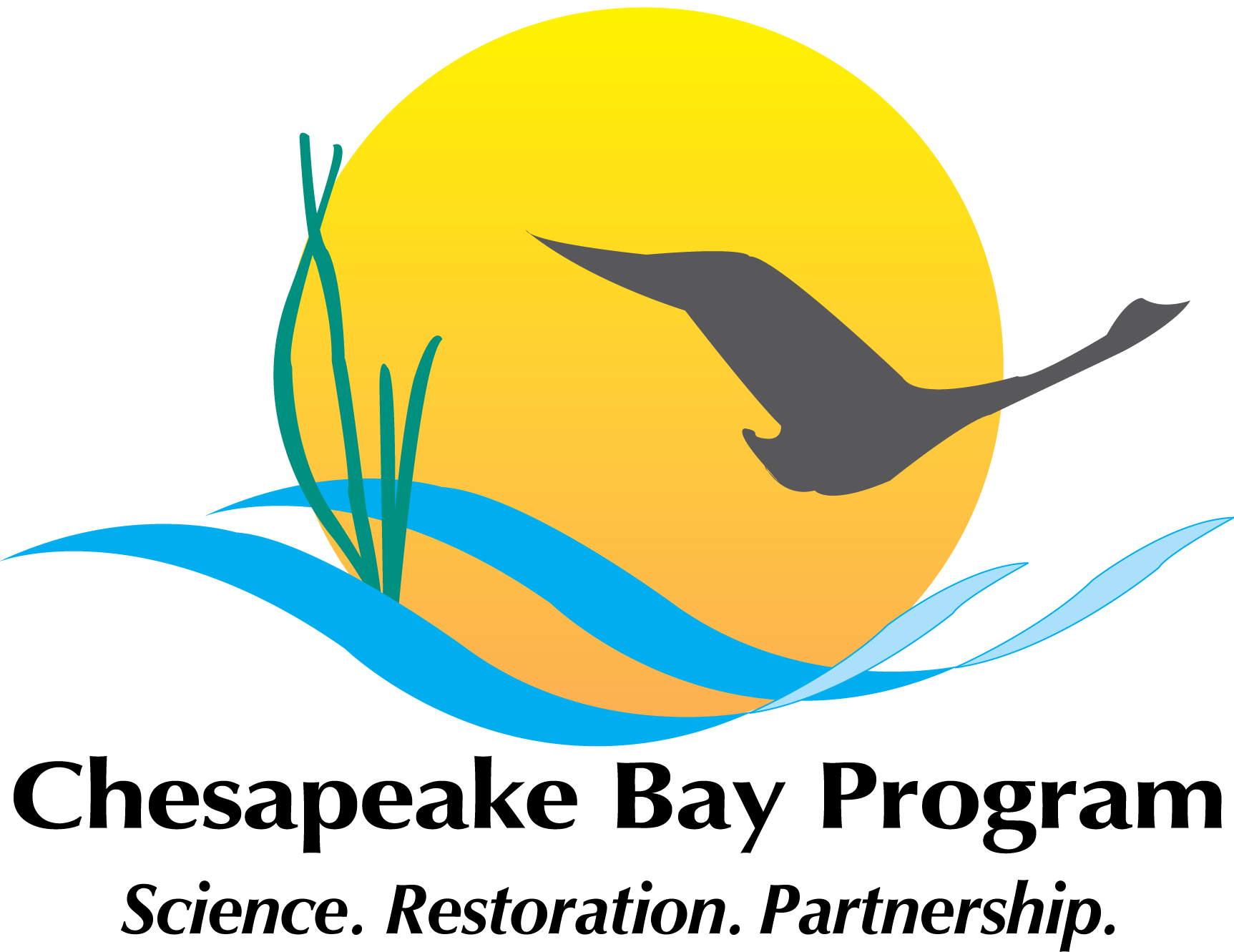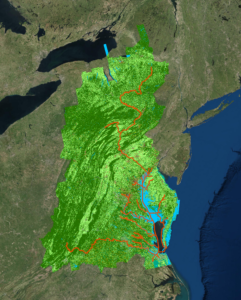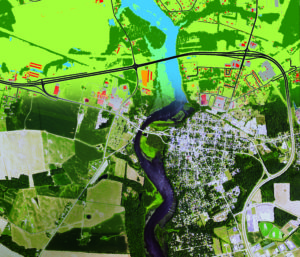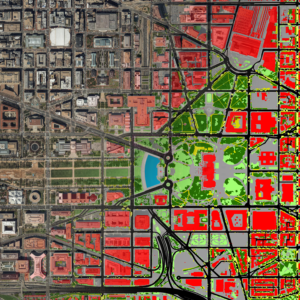Chesapeake Bay Restoration to Benefit from Groundbreaking Technology Advancement
Data project will save government and nonprofit resources
 Annapolis, MD — Today, the Chesapeake Bay Program (CBP) announced the completion of the Chesapeake Bay High-resolution Land Cover Project. It is a critical and timely step needed to improve information about the natural and human-made features that exist on the landscape of the Bay watershed, such as buildings, tree canopy and water. CBP will use this dataset in 2017 as the foundation of its effort to evaluate stakeholder progress toward meeting reduction targets for Bay pollution loads.
Annapolis, MD — Today, the Chesapeake Bay Program (CBP) announced the completion of the Chesapeake Bay High-resolution Land Cover Project. It is a critical and timely step needed to improve information about the natural and human-made features that exist on the landscape of the Bay watershed, such as buildings, tree canopy and water. CBP will use this dataset in 2017 as the foundation of its effort to evaluate stakeholder progress toward meeting reduction targets for Bay pollution loads.
Chesapeake Conservancy, a small nonprofit in Annapolis, Maryland, offered an innovative solution to help CBP improve available data about the Bay watershed. The Chesapeake Conservancy’s Conservation Innovation Center (CIC) spearheaded a partnership with the University of Vermont and Worldview Solutions, Inc. to complete the Chesapeake Bay High-resolution Land Cover Project, one of the largest high-resolution land cover datasets in the nation.

Red marks the Captain John Smith Chesapeake National Historic Trail.
For ten months, the teams of geospatial analysts worked to produce one-meter by one-meter resolution land cover data for nearly 100,000 square miles comprising the Chesapeake Bay watershed and surrounding counties. This new land cover classification has a high degree of accuracy and provides 900 times the amount of information over the existing watershed-wide dataset. Most importantly, this data will be publicly available and updated periodically, at no cost for anyone to use.
The CBP will use the high-resolution land cover data to improve and refine its current suite of modeling tools. This improved level of detail will enhance the evaluation of progress in support of the 2017 Chesapeake Bay Total Maximum Daily Load Mid-Point Assessment (Bay TMDL). In addition, the high-resolution land cover data will provide the following specific benefits, as examples:
- Characterizing, mapping and tracking of wetlands, riparian forest buffers, forests and impervious surfaces;
- Prioritizing and targeting restoration, conservation, education and public access efforts; and
- Verifying riparian buffer and urban tree canopy best management practices.
The Chesapeake Conservancy has piloted the Chesapeake Bay High-resolution Land Cover Project by integrating the data into decision-support tools for restoration and conservation. Efforts of federal, state and local government agencies, nonprofits and for-profit environmental investment firms all have benefited from the data products,
- The District of Columbia’s Urban Forestry Administration recently turned to the CIC for assistance in deciding where to plant trees on public lands by analyzing such elements as areas where there is no tree cover and surface water accumulates.
- Ecosystem Investment Partners cooperated with the CIC to obtain information on the best places for stream restoration projects in the State of Maryland.
- The National Park Service partnered with the CIC to determine the viewshed and most evocative landscapes in need of protection for the Captain John Smith National Historic Trail.
High-resolution land cover data will directly benefit all of CBP’s goal implementation teams, advisory committees and workgroups, and support nearly all outcomes specified in the 2014 Chesapeake Bay Watershed Agreement.

Land cover data image of Denton, MD generated by the Chesapeake Conservancy’s Conservation Innovation Center.
Light green: low vegetation (e.g. grass, fields)
Dark green: tree canopy
Orange: bare earth (e.g. baseball field)
Black: roads
Grey: non-road impervious surface (e.g. sidewalk, parking lot)
Red: structures
Blue: water
Turquoise: emergent wetlands
Facts
Land cover classification data is categorical information about the natural and human-made features that exist on the landscape, such as buildings, tree canopy and water. Datasets vary in the geographic areas that they represent, their spatial resolution and the number of landscape feature types they describe.
Land cover is one of the principal data sets used by the CBP modeling suite to estimate the amount of nutrients and sediments transported across the watershed into the Chesapeake Bay. This high-resolution land cover data will inform the Bay TMDL Mid-Point Assessment.
Issues
Across the board, reliable land cover classification data, especially at high-resolutions, is expensive to produce and requires expert staff, computers and software. This makes it difficult for organizations and government agencies to generate on their own. Without accurate and precise data, however, it often is challenging to set realistic, rigorous pollution targets. To date, CBP had relied on 30-meter land cover data produced by the U.S. Geological Survey and National Oceanic and Atmospheric Administration. While it can describe generalized landscape trends, data at this resolution cannot accurately depict urban tree canopy, turf grass, narrow roads and small buildings.
Importance
The High-resolution Land Cover Project will be useful not only to the restoration efforts of the Chesapeake Bay Program, but also to state and local governments, nonprofits, private businesses and academic institutions throughout the watershed. It provides partner organizations with the power to practice precision conservation, which is loosely described as getting the right restoration and conservation practices, in the right places and the right times. Effective and impactful decisions about where to target conservation efforts, made based on the foundational land cover data, will save government and nonprofit redundancies and resources.

Image featuring U.S. Capitol in Washington, DC. An example of the Chesapeake Bay High Resolution Land Cover Project.
For example, the U.S. Forest Service is working to integrate the data into their iTree platform, a suite of free urban and rural forestry analysis and benefits assessment tools; the Commonwealth of Pennsylvania is using the data to help identify and prioritize potential riparian buffer restoration efforts; and local governments will be able to use the data to characterize the landscape in updates to comprehensive plans and other local planning documents.
Quotes
“This new information can only help us make better decisions as we continue our progress in restoring the Chesapeake Bay. This has always been a program based on cutting edge science and the availability of this data to local governments, non-profit organizations, consultants, academic institutions and state and federal agencies will help ensure will marshal our limited resources to achieve the greatest benefit.”
–Molly Joseph Ward, Virginia Secretary of Natural Resources, and Chair, Chesapeake Bay Program Principals’ Staff Committee
“The power of data behind the Chesapeake Bay High-resolution Land Cover Project cannot be overstated. This is a technological snapshot, the likes of which we’ve never had before, of exactly how the land is being used across the entire watershed. Now restoration and conservation decisions can be made that more closely and accurately reflect real-world conditions.”
–Nick DiPasquale, Director, Chesapeake Bay Program
“This truly is what I call a ‘watershed moment,’ a new era for the conservation movement. Think of this innovative technology as an MRI for the landscape, the results of which are being harnessed, focused and deployed to practice precision conservation, helping to make the struggling Chesapeake Bay healthier. This is a foundation for all organizations, agencies, corporations and individuals to work more effectively together.”
–Joel Dunn, President and CEO, Chesapeake Conservancy
“The Chesapeake Bay High-Resolution Land Cover Project is groundbreaking in many ways. One of the country’s largest high-resolution land cover datasets now will be free to download for anyone, anywhere. This initiative was highlighted recently in a White House report about technological innovations for conservation and has been mentioned as a model to be replicated nationwide. Land use and land use change is a key issue for, and beyond, the Bay. With an increasing human population having an ever-increasing impact on the Chesapeake’s land, water, air and climate, we are looking now to provide regular, timely updates to this information. Thanks to help from our partners at Microsoft and Esri, our new methods, which are being tested for pilot areas in the Bay, should reduce update time by half or more of the existing standard.”
–Jeffrey Allenby, Director of Conservation Technology, Chesapeake Conservancy
MEDIA CONTACTS:
- Rachel Felver, Director of Communications, Chesapeake Bay Program, (410) 267-5740
- Jody Couser, Director of Communications, Chesapeake Conservancy, (443) 703-8678